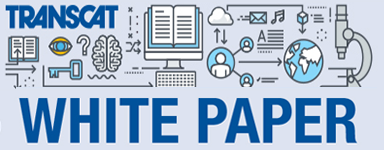

TAR vs. TUR: Reasons to Upgrade to TUR
Transcat has performed enough research on uncertainty in measurement to know that this concept extends to the testing of consumer and business products and their associated manufacturing processes operated by our clients. Historically, the Test Accuracy Ratio (TAR) has been a simplified indicator for the relationship between the accuracy of a measurement and the accuracy of the test instrument that is selected to quantify the measurement. However, this simple process lends itself to a hidden risk: an indeterminate region within which the accuracy of the instrument may detrimentally affect the measurement result. This indeterminate region effectively reduces the acceptable tolerance range for the accuracy of the measurement, but it includes more than just the accuracy of the instrument. Therefore, the TAR is somewhat misleading.
A better measure is the Test Uncertainty Ratio (TUR), which is basically the same concept as the TAR that includes not only the accuracy of the test instrument, but also all other types of errors linked to the process of taking the measurement. In many cases, there may be only 2 or 3 additional components of error that must be considered. In effect, the TUR extends beyond the mere accuracy of the test instrument to include these measurement errors. This combined error is referred to as the uncertainty of the measurement. The difference between TAR and TUR is due to the difference between the ‘measurement standard’s accuracy’ and the ‘uncertainty of the measurement’ (which includes the standard’s accuracy).
The reason to make the change from TAR to TUR within a company’s quality documents is to maintain harmonization with the changes in global practices. The International Standards Organization (ISO) is the gatekeeper and facilitator of these practices. ANS/ISO/IEC 17025, General requirements for the competence of testing and calibration laboratories, is driving the change away from simple indicators like the TAR toward a better understanding of the more complete TUR, which is based upon the uncertainty of a measurement.
An even more compelling reason to move to TUR, and specifically uncertainties, is that this enables anyone affected by a false accept (consumer risk) or false reject (producer risk) condition, found within the indeterminate region, to quantify this risk and understand how it affects the measurement. The ratios of TAR and TUR themselves do not reveal this quantified risk in measurement. However, by aligning the test limits, the actual reported reading of the instrument from the calibration, and the uncertainty of the measurement (see figure below) one can determine whether risk is a factor and, if so, can easily quantify the risk. This improved quality of information supports better decision making in the process where the measurement is being applied.

